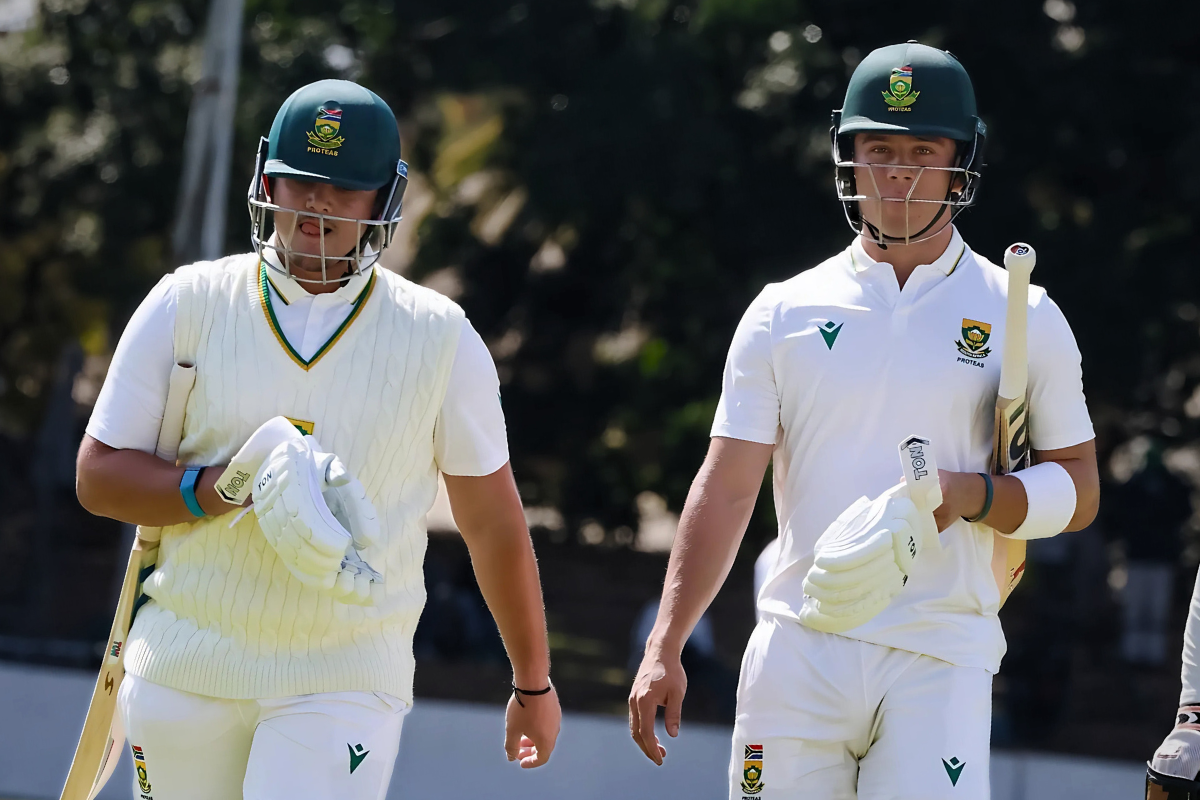

It didn’t take long. Just 157 balls, in fact. That’s how quickly 19-year-old Lhuan-dre Pretorius introduced himself to the world of Test cricket, not just as a debutant, but as the kind of batter South Africa haven’t had since AB de Villiers walked away from the format in 2018.
Against Zimbabwe in Bulawayo, South Africa fielded a top seven that was a mix of unproven promise and stand-in regulars. No Temba Bavuma. No Aiden Markram. No Ryan Rickelton. And into that void stepped Lhuan-dre Pretorius, a teenager with seven first-class matches to his name, and calmly smashed 153 on debut. He was aggressive, fearless, and most importantly, decisive, something South Africa Test batters have rarely appeared to be, barring rare sparks of brilliance, in Tests in the last many years.
Alongside him was Dewald Brevis, flamboyant, flashy, and audacious enough to get to a Test fifty on debut with three sixes in an over. And just like that, South Africa’s middle-order suddenly looked like it had a spark again.
If you’ve been watching Test cricket over the last few years, you know this: scoring quickly matters. Pitches are spicier, bowlers are better, and surviving alone doesn’t win you games anymore. You need players who can absorb pressure, and then hit back hard.
Look at the top sides in Tests since 2023:
These aren’t just flashy players, they’re match-winners from No.4 to No.7.
Now compare that to South Africa. Since the start of 2023, their middle-order (Nos. 4-7) have collectively struck at just 53.97, worse than every Test team except Ireland, West Indies and Zimbabwe. Even though they won the WTC Final, that stat reveals a lack of impetus. It is not a stretch to say that their Test title came on the back of their ferocious bowling attack, even if the batting punched above its weight in the final itself.
Their fastest regular? Kyle Verreynne at 63.27 (18th globally among middle-order batters), followed by David Bedingham, but both average under 35 in this stretch. That’s simply not enough. Which is why what Pretorius and Brevis offer isn’t just exciting, it’s necessary.
So what could the next few years look like for South Africa’s Test batting? It’s hard to say for sure, but it’s finally starting to feel like something.
No question here. South Africa’s most dependable opener, and the Player of the Match in the WTC 2025 Final for that gritty century. He’s the glue up top, and a leader by default. His technique looked much better in recent Tests and the Markram who promised much in 2018 might have finally arrived.
Left-handed, fluent, and a handy wicketkeeper too. Rickelton has shown flashes in both formats and gives the squad tactical flexibility, especially if Pretorius keeps wickets less often in the long run.
Not a name that’s popped up in many Test XIs yet, but Ackermann is knocking loudly. At 29, he averages 46.22 in first-class cricket, just hit a double ton as captain of South Africa A vs West Indies A, and might finally be ready to make the leap.
Still the leader of the batting group when fit. He may not be explosive, but he brings calm and control and a terrific record in Tests in the last few years. A lot will still depend on how his body holds up, but when it is, Bavuma is South Africa’s best Test batter.
Stubbs is still figuring out his tempo in red-ball cricket. Brilliant in T20s, but hasn’t quite cracked the middle-order Test role just yet. South Africa will likely persist, and rightly so, but he’s under a bit of pressure now from Brevis and Co.
We’ve moved on from calling him “Baby AB.” He’s Dewald Brevis, full stop. He had a huge first-class season (averaged 47.75), and his Test debut finally happened. He’s a bully against spin, and there’s a quiet intensity about his game that suggests he’ll stick. There are concerns surrounding his short-ball game, and it showed up even in this Test against Zimbabwe, but Brevis is here to make a statement and has done that so far.
Teenage prodigy. Already signed an IPL deal. Now the youngest player ever to score 150 on Test debut, and the fastest South African to do it, breaking AB de Villiers’ record. He can also keep wickets, though long-term he might slot in at No.7 to manage the workload. And he can open if needed. That’s a dream flexibility package.
LATEST POSTS:
It’s been years since South Africa had a middle-order that felt threatening to an opposition bowling team that were onto of the game. To be precise, not since AB de Villiers and Quinton de Kock, briefly, has South Africa had attacking batters as the fulcrum of their Test side. This felt modern. This felt like it could shift gears and take the game away.
And that’s what champion teams have. South Africa are champions now in this format, but to sustain that in this cycle, where their fixtures are probably the toughest (with away tours of India, Pakistan and Sri Lanka and home series against Australia, England and Bangladesh) South Africa need to reinvent their batting dynamics and the first step towards that transition has come even before their first game of this cycle.
With Pretorius and Brevis, alongside Stubbs in a full-strength side, they might finally have that edge again. And it couldn’t have come at a better time.
For more updates, follow CricXtasy on Facebook, Instagram, Twitter, Telegram, and YouTube.